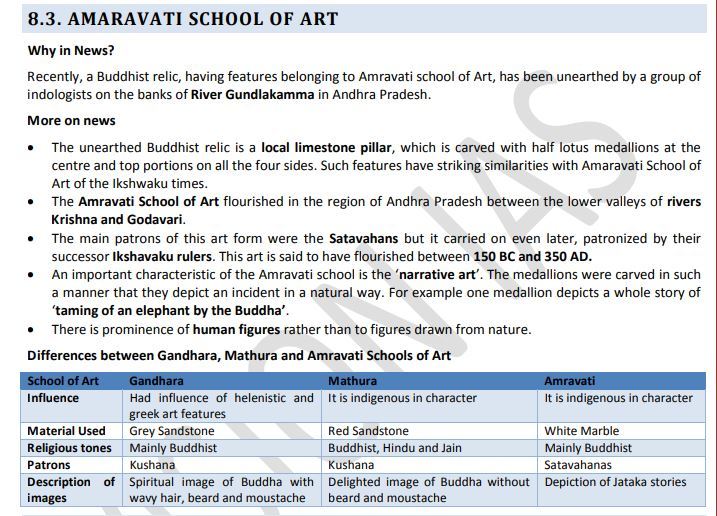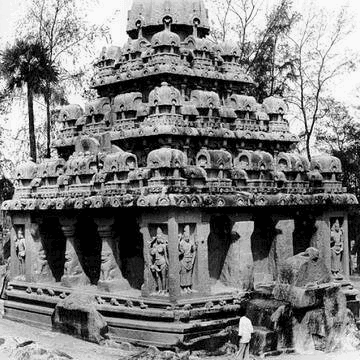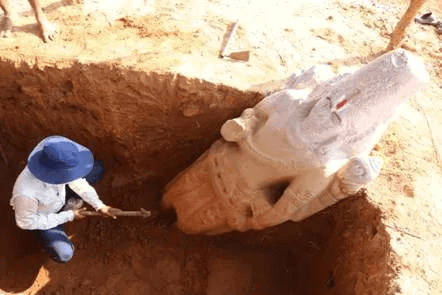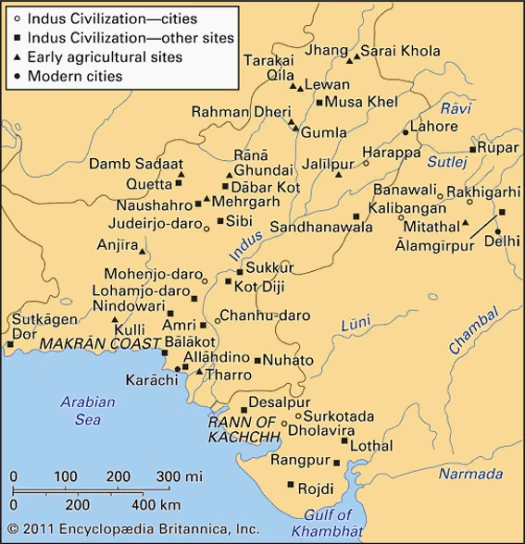Current History-Topic

Konark Sun Temple
A plan to restore and preserve the nearly 800-year-old Konark Sun Temple in Odisha would be drawn up soon, after a two-day conference of experts at the end of the month, Union Culture Minister Prahlad Singh Patel said.
Background:
The temple had been filled with sand and sealed by the British authorities in 1903 in order to stabilise the structure. A scientific study was carried out by the Roorkee-based Central Building Research Institute from 2013 till 2018 to ascertain the temple’s structural stability as well as the status of the filled-in sand.
About the Temple:
- Built in the 13th century, the Konark temple was conceived as a gigantic chariot of the Sun God, with 12 pairs of exquisitely ornamented wheels pulled by seven horses.
- It was built by King Narasimhadeva I, the great ruler of Ganga dynasty.
- The temple is included in UNESCO World Heritage Site in 1984 for its architectural greatness and also for the sophistication and abundance of sculptural work.
- The temple is perfect blend of Kalinga architecture, heritage, exotic beach and salient natural beauty.
- It is protected under the National Framework of India by the Ancient Monuments and Archaeological Sites and Remains (AMASR) Act (1958) and its Rules (1959).
- The Konark is the third link of Odisha’s Golden Triangle. The first link is Jagannath Puri and the second link is Bhubaneswar (Capital city of Odisha).
- This temple was also known as ‘BLACK PAGODA’due to its dark color and used as a navigational landmark by ancient sailors to Odisha. Similarly, the Jagannath Temple in Puri was called the “White Pagoda”.
- It remains a major pilgrimage site for Hindus, who gather here every year for the Chandrabhaga Mela around the month of February.
Markandeshwar temple in Maharashtra:
Context: Restoration work of Markandeshwar temple in Maharashtra by Archaeological Survey of India is in full swing.
About the temple:
- Known as the “Khajuraho of Vidarbha”,the temple of Markandadeo is situated on the bank of River Wainganga in district Gadchiroli of Maharashtra.
- The temples belong to the Nagara group of temples of North India.
- On stylistic grounds, their date ranges in between 9-12th centuries CE.
- The temples belong to saiva, vaishnava and sakta faith. Most of the temples have a simple plan, with ardhamandapa, mandapa, antaralaand garbhagriha forming the component of the entire set up.
- Mamallapuram, also called Mahabalipuram or Seven Pagodas, is a town that lies along the Coromandel Coast of the Bay of Bengal, 60 km south of Chennai.
- The town’s religious centre was founded by a 7th-century Hindu Pallava King—Narasimhavarman I, also known as Mamalla—for whom the town was named.
- It contains many surviving 7th- and 8th-century Pallava temples and monuments, chief of which are the sculptured rock relief popularly known as “Arjuna’s Penance,” or “Descent of the Ganges,” a series of sculptured cave temples, and a Shiva temple on the seashore.
- The town’s Five Rathas, or monolithic temples, are the remnants of seven temples, for which the town was known as Seven Pagodas. The entire assemblage collectively was designated a UNESCO World Heritage Site in 1984.
Recently, Chaukhandi Stupa has been declared of national importance by the Archeological Survey of India (ASI).
About Chaukhandi Stupa
- It is an ancient Buddhist site in Sarnath (Uttar Pradesh), with a lofty brick structure crowned with an octagonal tower.
- Originally stupa is said to be built by Emperor Ashoka.
- The octagonal tower on top is a Mughal monument built in 1588 to commemorate Humanyu’s visit to this place.
About Sarnath
- Sarnath had been referred as 'Mrigadava' meaning 'deer park' and 'Isipatana' denoting the place where holy men fell to earth.
- Site for Buddhism: Lord Buddha delivered his first sermon after attaining enlightenment in Sarnath called dharmachakra – pravartana.
- Dhamekh Stupa (Dharma Chakra Stupa): It is the place where Lord Buddha had given his first conversation of Dharma. is said to have been built in the year 500 CE while the construction was ordered by Emperor Ashoka in the 3rd Century BC.
- Mulagandhakuti Vihara: This is the place where Lord Buddha lived when he visited Sarnath
- Bodhi Tree: It is located near to the Mulagandhakuti Vihara, planted by taking a branch from the Sri Maha Bodhi tree of Anuradhapura, Sri Lanka.
- Ashoka Pillar: Emblem of the country.
- Ashoka Pillar marks the visit of King Ashoka to Sarnath. This 50m long pillar has four lions on top of it and four animals at below viz. bull, lion, elephant and horse. These four represent the phases of Lord Buddha’s life.
- Site for Jainism: It is the birthplace of 11th teerthankar, Shreyansanath.

Gottiprolu
Excavation by Archaeological Survey of India in Gottiprolu, Andhra Pradesh indicate it as a Trade Centre of Early Historic Period.
Where is it?
Gottiprolu lies on the right bank of a distributary of river Swarnamukhi about eighty kilometers from Tirupati and Nellore.
What has been unearthed?
- Among many other antiquities unearthed are one life size Vishnu sculpture and a wide variety of pottery of the early centuries of current era.
- The excavation revealed the presence of brick-built structures in different sizes and forms.
- The available brick sizes are comparable with the Satavahana / Ikshvaku period structures in Krishna valley.
- On the basis of the brick size and associated findings they can be placed anywhere between 2nd – 1st century BCE or little later (nearly 2000 years old).
- Other interesting antiquity retrieved is the molded female terracotta figurine with two hands lifted upwards.
- Other major retrieved antiquities unearthed are copper and lead coins, iron spear head, stone celts, terracotta beads, ear stud in semi precious stone and hopscotches.
What do they indicate?
- The proximity of the site to the seacoast suggests that the site could have served as a strategic settlement involved in maritime trade.
- These settlements could have been an important trade centre as indicated by the presence of imitated amphorae wares that were mostly used to transport liquid commodities.
- The findings of assorted stone tools of Palaeolithic and Neolithic periods from secondary contexts suggest that prehistoric people also occupied this area.
- A series of broken terracotta pipes fitted into one another revealed about the civic amenities maintained by the occupants of this site. The drainage system pattern is understood by the exposed remains of the drainage at the site.
Keeladi Findings
According to a report published by the Tamil Nadu Archaeology Department (TNAD), the cultural deposits unearthed during the excavations at site Keeladi located in the Sivaganga district could be dated to a period between the 6th century BC and the 1st century AD.
Key Findings
- The title of the report was ‘Keeladi-An Urban Settlement of Sangam Age on the Banks of River Vaigai.’
- Previously it was believed that the Keeladi artefacts belonged to the 3rd century BC.
- But the carbon dating test confirmed the date of the Tamil-Brahmi script is dated to the year 580 BC.
- The results suggest that the second urbanization (the first being the Indus Valley Civilization) of Vaigai plains happened in Tamil Nadu during the 6th century BC.
- The contemporary of which in the Gangetic plains was the Iron Age & the period of the rise of various Heterodox sects.
- Skeletal fragments of Cow/Ox & Buffalo, Sheep & Goat, Nilgai & Blackbuck, Wild boar, and Peacock suggest that the society in Keeladi had used animals predominantly for agricultural purposes.
- Pottery specimens from Keeladi confirmed that the water containers and cooking vessels were shaped out of locally available raw materials.
- The recovery of spindle whorls, pinpointed bone tip tools, hanging stones of the yarn, terracotta spheres, copper needle, and earthen vessels to hold liquid, outlines the various stages of weaving industry from spinning, yarning, looming, weaving and dyeing.
Sangam Age
- The word ‘Sangam’ is the Tamil form of the Sanskrit word Sangha which means a group of persons or an association.
- The Tamil Sangam was an academy of poets who flourished in three different periods and in different places under the patronage of the Pandyan kings.
- The Sangam literature which was largely consolidated from the third Sangam, throws information on conditions of life of people around the beginning of the Christian era.
- It deals with the secular matter relating to the public and social activities like government, war charity, trade, worship, agriculture, etc.
- Sangam literature consists of the earliest Tamil works (such as the Tolkappiyam), the ten poems (Pattupattu), the eight anthologies (Ettutogai) and the eighteen minor works(Padinenkilkanakku), and the three epics.
Tamil-Brahmi Script
- The Brahmi script was the earliest script that the Tamils used.
- In the late ancient and early medieval period they started evolving a new angular script, called the Grantha script, from which the modern Tamil is derived.
Vaigai River
- It is an east-flowing river.
- The Vaigai river basin is an important basin among the 12 basins lying between the Cauvery and Kanyakumari.
- This basin is bounded by the Cardamom Hills and the Palani Hills on the West and by the Palk Strait and Palk Bay on the East.
National Maritime Heritage Museum
- India and Portugal will cooperate in the setting up of a National Maritime Heritage Museum at the ancient Indian site of Lothal in Gujarat.
- The museum will display the India’s heritage of inland waterways and trade through water route.
- Lothal was chosen because it has lots of archaeological remains, showcasing the trade route through water. It was a major maritime activities center of Harappans.
- Lothal displays engineering standards used in creating an artificial dock that shows high standards of scientific and engineering skills, far more advanced than anywhere else in the world in the 3rd millennium BC.
- The Government of India has allocated grant for building the maritime museum and the foundation stone for the project was laid by the Prime Minister in March, 2019.
- The project is being implemented by the Ministry of Shipping through its Sagarmala programme, with the involvement of the Archaeological Survey of India (ASI), the State government and other stakeholders.
- Sagarmala project was approved by the Union Cabinet on 25th March 2015. It aims to leverage the country’s coastline and inland waterways to drive industrial development.
- Its main objective is to promote port-led direct and indirect development and to provide infrastructure to transport goods to and from ports quickly, efficiently and cost-effectively.
Nagardhan Excavations and Vakataka Dynasty
Recently, archaeological excavations were carried out at Nagardhan village👀 in Ramtek Taluk near Nagpur, Maharashtra.
- The area surrounding the Nagardhan Fort in the village has the archaeological remains.
- The Nagardhan Fort was constructed during the Gond Raja period and later renovated and re-used by the Bhosales of Nagpur during the late 18th and 19th centuries.
- The excavations have provided evidence on the life, religious affiliations and trade practices of the Vakataka dynasty.
- Nagardhan is understood to have served as a capital of the Vakataka kingdom👀.
Vakataka Dynasty
- It originated in the central Deccan in the mid-3rd century CE👀 and its empire is believed to have extended from Malwa and Gujarat in the north to the Tungabhadra 👀in the south and from the Arabian Sea in the west to the Bay of Bengal in the east.
- The Vakataka rulers followed the Shaiva sect of Hinduism👀.
- Animal rearing was one of the main occupations of the people. Remains of domestic animals like cattle, goat, sheep, pig, cat, horse and fowl were traced in an earlier study.
- The Vakataka rulers forged several matrimonial alliances with other dynasties of their times. One of the key alliances was with Prabhavatigupta of the Gupta dynasty (Vaishnavites), which was then ruling north India.
- Prabhavatigupta was the chief queen of the Vakataka king Rudrasena II👀 and took over as queen after the sudden death of her husband. She ruled for about 10 years until her son Pravarasena II👀 succeeded.
- Queen Prabhavatigupta and Vaishnavism
- The researchers believe that the practice of worshipping Narasimha in Maharashtra emerged from Ramtek, and that Queen Prabhavatigupta had a pivotal role in propagation of Vaishnava practices in the Vidarbha region of Maharashtra.
- Some of the temples identified as Keval Narasihma, Rudra Narasimha and the one dedicated to Varaha could be traced to Ramtek, and showcase strong affinity to the incarnations of Lord Vishnu. None of these religious structures was, however, present here until the Queen took the throne.
Findings and their Significance
- It is the first time clay sealings have been excavated from Nagardhan.
- The oval-shaped👀 sealing belongs to the period when Prabhavatigupta was the queen of the Vakataka dynasty.
- It bears her name in the Brahmi script👀, along with the depiction of a conch. The presence of the conch is a sign of the Vaishnava affiliation that the Guptas held.
- The sealings were introduced and issued under Prabhavatigupta’s rule which shows her importance and stature as a woman.
- The✍ Vakataka rulers followed the Shaiva sect of Hinduism while the Guptas followed Vaishnava sect.👀 Queen’s powerful personality allowed her to follow the sect of her choice.
- The sealing was traced on top of a mega wall👀 which could have been part of a royal structure at the capital city.
- The copperplate issued by Queen Prabhavatigupta👀tarts with a genealogy of the Guptas, mentioning the Queen’s grandfather Samudragupta and her father Chandragupta II.
- Vakatakas traded with Iran and beyond, through the Mediterranean Sea and the sealings are believed to be used as official royal permission issued from the capital.
Earliest Sanskrit Inscriptions in South India found in A.P.
The Archaeological Survey of India (ASI) has discovered the earliest Sanskrit inscription in South India which is also an earliest epigraphic evidence (Epigraphy is the study of ancient inscriptions) for the Saptamatrika cult.
- Saptamatrikas are a group of seven female deities👀 worshipped in Hinduism as personifying the energy of their respective consorts.
- Another inscription in Prakrit language👀 and of Brahmi characters belonging to the 1st century A.D. was also found.
Key Points
- Inscriptions related to Saptamatrika: The found inscription records the construction of a Prasada (temple), a mandapa and consecration of images by a person named Kartika 👀at the temple of Goddess Saptamatrika at Tambrape.
- Location:Tambrape is the ancient name of Chebrolou, Andhra Pradesh.
- Earlier References to Saptamatrika: Earlier references to Saptamatrika worship have been found in the early Kadamba copper plates and the early Chalukyas and Eastern Chalukya copper plates dated around 600 A.D.
- Language and Characters: All the available records proved that the found inscription (also known as Chebrolu inscription) is in 👀Sanskrit and in Brahmi characters.
- Issued by: Satavahana king Vijaya 👀in 207 A.D.
- So far the Nagarjunakonda inscription👀 of Ikshavaku king Ehavala Chantamula 👀issued in the 4th century A.D. was considered the earliest Sanskrit inscription in South India.
Satavahanas
- In the Deccan, the Satavahanas established their independent rule after the decline of the Mauryas. Their rule lasted for about 450 years.
- They were also known as the Andhras.👀
- The Puranas and the Nasik and Nanaghad inscriptions remain important sources for the history of Satavahanas.
- The founder of the Satavahana dynasty was👀 Simuka. The greatest ruler of the Satavahana dynasty was Gautamiputra Satakarni.
- There was remarkable progress in the fields of trade and industry during the Satavahana rule. The greatest port of the Satavahanas was Kalyani on the western Deccan 👀and Gandakasela, Ganjam on the east coast were the other important seaports.
- The Satavahanas patronized Buddhism and Brahmanism. Brahmanism was revived by the Satavahanas along with the performance of asvamedha and rajasuya sacrifices.
- They also patronized the Prakrit language and literature.
The five ‘iconic’ archaeological sites mentioned in the Budget
The Government has proposed to set up an Indian Institute of Heritage and Conservation under the Ministry of Culture, and develop five archaeological sites as “iconic sites” with onsite museums.
Facts:
| Site | Location | About |
| Rakhigarhi | Hissar, Haryana | One of the most prominent and largest sites of the Harappan civilisation |
| Hastinapur | Meerut, Uttar Pradesh | finds mention in the Mahabharata👀 and the Puranas,most significant discoveries made at this site was of the “new ceramic industry”👀, which was named the Painted Grey Ware |
| Sivsagar | Assam👀 | Served as the capital of the Ahom Kingdom👀 from 1699 to 1788. Various constructions and artifacts belonging to the kingdom have been discovered |
| Dholavira | Khadir island👀 of the Rann of Kutch, Gujarat | One of the sites of Harappan Civilization |
| Adichnallur | Thoothukudi,👀 Tamil Nadu | Famous for discovery of an ancient Tamil-Brahmi script👀 on the inside of an urn containing a full human skeleton, a fragment of a broken earthenware, and the remains of living quarters. |




